
Charlotte Ander was a German actress.
![<i>The Devils General</i> 1955 [[West Germany]] film](https://upload.wikimedia.org/wikipedia/en/3/32/The_Devil%27s_General.jpg)
The Devil's General is a 1955 black and white West German film based on the play of the same title by Carl Zuckmayer. The film features Curd Jürgens as General Harras, Marianne Koch, Viktor de Kowa, Karl John, Eva Ingeborg Scholz, and Harry Meyen. It was shot at the Wandsbek Studios in Hamburg. The film's sets were designed by the art directors Albrecht Becker and Herbert Kirchhoff.

The Gottbegnadeten-Liste was a 36-page list of artists considered crucial to National Socialist culture. The list was assembled in September 1944 by Joseph Goebbels, the head of the Ministry of Public Enlightenment and Propaganda, and Germany's supreme leader Adolf Hitler.
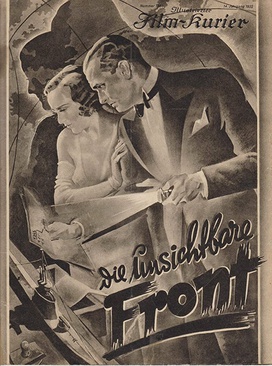
The Invisible Front is a 1932 German spy thriller film directed by Richard Eichberg and starring Trude von Molo, Karl Ludwig Diehl, Veit Harlan and Paul Hörbiger. The story was written by Robert A. Stemmle, Curt Siodmak and Max W. Kimmich, who also presented the idea of this film to his colleagues. It was made at the Johannisthal Studios in Berlin and on location in Hamburg. The film's sets were designed by the art directors Artur Günther and Willi Herrmann.
Ernst Neubach was an Austrian screenwriter, producer and director.
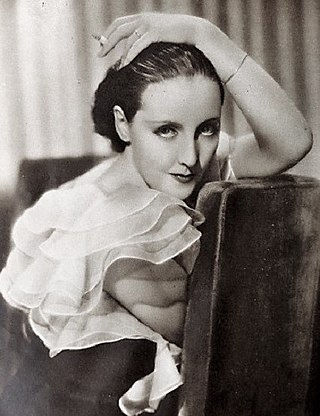
Dorothea Wieck, born Dora Bertha Olavia Wieck, was a German theatre and film actress.
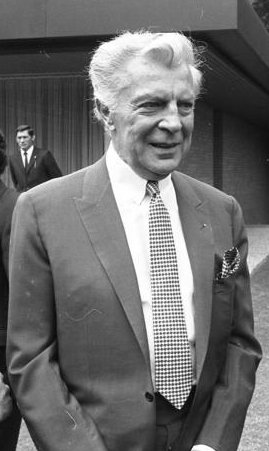
Viktor de Kowa was a German stage and film actor, chanson singer, director, narrator, and comic poet.

My Song Goes Round the World is a 1934 British musical film directed by Richard Oswald and starring Joseph Schmidt, John Loder and Charlotte Ander. It was an English-language version of the 1933 German film A Song Goes Round the World, also directed by Oswald.

Schubert's Dream of Spring is a 1931 German musical film directed by Richard Oswald and starring Carl Jöken, Gretl Theimer and Alfred Läutner. It was shot at the Halensee Studios in Berlin with sets designed by the art director Franz Schroedter. It is a biopic of the Austrian composer Franz Schubert (1797–1828). It was one of two films along with Vienna, City of Song (1930) with which the director paid musical tribute to his native city Vienna.
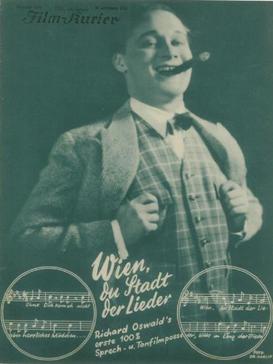
Vienna, City of Song is a 1930 German musical comedy film directed by Richard Oswald and starring Charlotte Ander, Paul Morgan and Igo Sym. It was shot at the Babelsberg Studios in Berlin. The film's sets were designed by the art director Franz Schroedter.

Katharina Knie is a 1929 German silent drama film directed by Karl Grune and starring Eugen Klöpfer, Carmen Boni and Adele Sandrock. It is based on the 1928 play of the same title by Carl Zuckmayer. It was shot at the Babelsberg Studios in Berlin. The film's art direction was by Robert Neppach and Erwin Scharf. It was distributed by the Munich-based Bavaria Film.
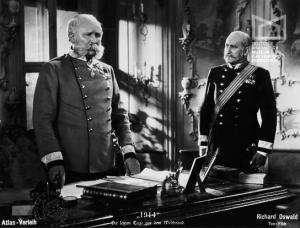
1914 is a 1931 German drama film directed by Richard Oswald and starring Albert Bassermann, Hermann Wlach and Wolfgang von Schwindt. The film focuses on the leadership of the Great Powers of Europe in the days leading up to the outbreak of the First World War, culminating in the assassination of Archduke Franz Ferdinand of Austria by Gavrilo Princip. It was produced at the Babelsberg Studios in Berlin and premiered in the city at the Tauentzien-Palast on 20 January 1931. At the request of the German Foreign Office an introduction by Eugen Fischer-Baling was filmed and presented at the start of the film. A special screening was held at the Reichstag on 3 March 1931.

Three Bluejackets, One Blonde Girl is a 1933 German comedy film directed by Carl Boese and starring Charlotte Ander, Heinz Rühmann and Friedrich Benfer. It was shot at the Babelsberg Studios in Berlin. The film's sets were designed by the art director Karl Machus.
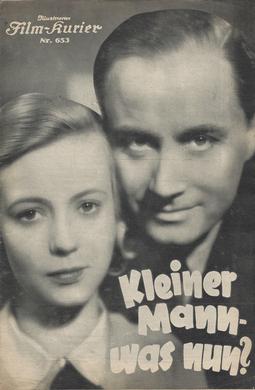
Little Man, What Now? is a 1933 German drama film directed by Fritz Wendhausen and starring Hermann Thimig, Hertha Thiele and Viktor de Kowa. It is an adaptation of the novel of the same name by Hans Fallada. The original concept for the film was to take a naturalistic approach, the same way the novel did, with Kurt Weill composing the music. Fallada had already remarked in 1932, after falling out with the producers and script writers, that the film had little to do with his novel, and that the script writers "would take a different approach," which they did. The Nazi Film Review Office insisted on extensive cuts, including all scenes featuring the Comedian Harmonists.
Heinz Goldberg (1891–1969) was a German screenwriter. He also directed two silent films. Following the Nazi Party's rise to power in 1933, the Jewish Goldberg went into exile in several countries including Austria and the Soviet Union before settling in Britain. He returned to Germany in the 1950s.

A Song Goes Round the World is a 1958 West German musical film directed by Géza von Bolváry and starring Hans Reiser, Sabine Sesselmann, and Ruth Stephan. The film is a biopic of the singer and film actor Joseph Schmidt. The title is a reference to his best-known song and a 1933 film of the same title in which he starred.

The Beautiful Galatea is a 1950 West German romantic comedy film directed by Rolf Meyer and starring Hannelore Schroth, Viktor de Kowa and Willy Fritsch. It is inspired by the story of Pygmalion's statue Galatea and is based on the play of the same name by Franz von Suppé.

The Castle in the South is a 1933 German comedy film directed by Géza von Bolváry and starring Liane Haid, Viktor de Kowa, and Paul Kemp. A separate French-language version Château de rêve was also produced and released by UFA's French subsidiary. It was made at the Tempelhof Studios in Berlin while location shooting took place in Dalmatia and at Rügen in Pomerania. The film's sets were designed by the art director Emil Hasler.
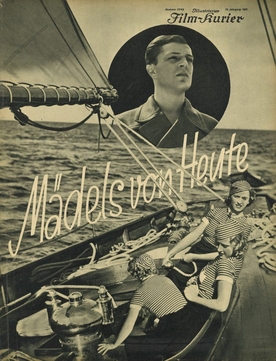
Girls of Today is a 1933 German comedy film directed by Herbert Selpin and starring Viktor de Kowa, Annie Markart and Oscar Sabo. The film's sets were designed by the art director Willi Herrmann.
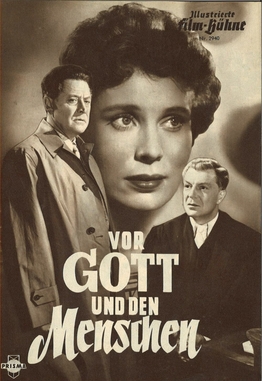
Before God and Man is a 1955 West German drama film directed by Erich Engel and starring Viktor de Kowa, Antje Weisgerber and Hans Söhnker. It was shot at the Tempelhof Studios in West Berlin. The film's sets were designed by the art directors Emil Hasler and Walter Kutz.


![<i>The Devils General</i> 1955 [[West Germany]] film](https://upload.wikimedia.org/wikipedia/en/3/32/The_Devil%27s_General.jpg)















